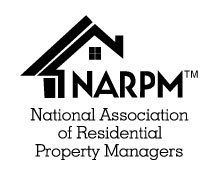The weather has been wild lately, and if you’re not thinking about natural disasters, you probably aren’t well-equipped to
rent out property in Santa Cruz.
Unfortunately, natural disasters can strike at any time, and as a Santa Cruz landlord, you must be prepared to protect your tenants, property, and investments. Whether it’s wildfire season, a significant storm, or an unexpected earthquake, establishing proactive measures is not just responsible, it could save lives and minimize property damage.
Don’t shy away from thinking about worst case scenarios. Prepare for them, instead.
This guide outlines actionable steps Santa Cruz landlords can take to prepare for natural disasters and ensure their properties and tenants are ready for any emergency.
Key Risks Santa Cruz Landlords Face:
Nestled between the coast and the mountainous regions of California, Santa Cruz's natural beauty and astonishing views come with an element of risk. The area is prone to wildfires during the dry season, heavy rainfall leading to flooding, and even the occasional earthquake, given its proximity to major fault lines. For landlords, it's crucial to mitigate these risks to maintain your property's safety, habitability, and value.
These are some of the most unpleasant natural disasters that are especially dangerous for Santa Cruz:
- Wildfires. Hot, dry seasons create high wildfire susceptibility. When the Santa Ana winds pick up, fire is especially dangerous.
- Flooding. Coastal properties and low-lying areas may face flooding during heavy storms or high tide surges. We experience threats from the ocean, the San Lorenzo River, and all the smaller creeks that flood from time to time.
- Earthquakes. Located in California, Santa Cruz landlords must consider seismic activity risk.
Not addressing these risks could endanger your tenants and lead to costly repairs and potential legal liabilities.
Steps to Prepare Your Property for a Natural Disaster
Do yourself, your property, and your tenants a favor by preparing some of these immediate steps.
1. Conduct a Risk Assessment for Your Property
Start by evaluating your property. Consider positioning. Are you near densely wooded areas or coastal zones, for example? Consider your property’s structural resilience and the current safety measures you have in place. Hiring a
professional inspector with experience in disaster preparedness can provide a thorough assessment.
Regular assessments ensure you’re adapting to changing environmental conditions and regulations.
2. Invest in the Right Insurance Policies
Standard property insurance often doesn’t cover all types of natural disasters. Ensure you have additional coverage for specific hazards common in Santa Cruz, such as:
- Earthquake insurance
- Flood Insurance
- Fire and smoke damage insurance
Review your policies annually to make sure they’re still adequate. Insurance is becoming more difficult for a lot of property owners to find. If you need a good agent, talk to us, and we can make a referral.
3. Improve Property Functions
Minor upgrades can make a big difference when disaster strikes. Consider fireproofing your property as best you can. Replace wooden fencing near the property with fire-resistant materials, create defensible space by clearing brush, and install ember-resistant vents. You also want to invest in flood prevention. Install flood barriers or sandbags and ensure proper drainage. In the interest of earthquake safety, retrofit your building with reinforcement measures, secure heavy furniture or appliances, and anchor foundations.
These changes may protect your property and attract tenants who value safety-conscious landlords.
4. Develop a Tenant Communication Plan
Your tenants should always know how to respond in case of an emergency. Create an accessible, multilingual emergency guide with:
- Emergency contacts (fire department, utilities,
property manager)
- Evacuation routes
- Instructions on turning off gas, electricity, and water if needed
- Where to find emergency supplies located on the property
Ensure this information is included in the welcome packet for new tenants and send annual reminders to refresh their knowledge.
5. Stock Your Property with Emergency Supplies
Keep your rental properties equipped with essential emergency supplies, such as:
Fire extinguishers in accessible locations- Buckets and sandbags for rain-heavy days
- First aid kits in common areas
- Flashlights and batteries in case of power outages
Encourage tenants to maintain their own emergency kits with essentials like water, food, and medications.
6. Utilize Technology for Early Warnings
Invest in smart home technology to safeguard against potential disasters. Smoke and carbon monoxide detectors are legally required and can help you monitor fire risks and air quality in real-time. It’s also a good idea to sign up for emergency alert services. Set up alerts for tenants through automated SMS platforms linked to weather or seismic activity updates.
7. Build Relationships with Local Disaster Services
Connect with local emergency responders, disaster service organizations, and landlord associations. Many organizations, like the Santa Cruz Office of Emergency Services (OES), offer educational workshops, free local hazard maps, and partnerships.
How to Support Your Tenants After a Disaster
Even after taking all precautions, disasters might still cause disruption. Being prepared to support your tenants afterward is equally essential:
- Conduct a quick property evaluation to identify any immediate risks or damages.
- Provide temporary lodging options if the unit is uninhabitable.
- Communicate with tenants regularly, providing updates as you repair and restore the property.
Your professionalism and quick decisions during this time can strengthen relationships, increase tenant retention, and showcase your commitment to safety.
Natural disasters are unpredictable, but by preparing thoroughly, you can safeguard your property, protect your tenants, and preserve your peace of mind as a Santa Cruz landlord. Your tenants value peace of mind, and your efforts to prepare can set your rentals apart as a trusted, safe place to live.
Taking these steps can even be a
marketing advantage. Show tenants your commitment to their safety—it’s not just about
property management; it’s about community care.








